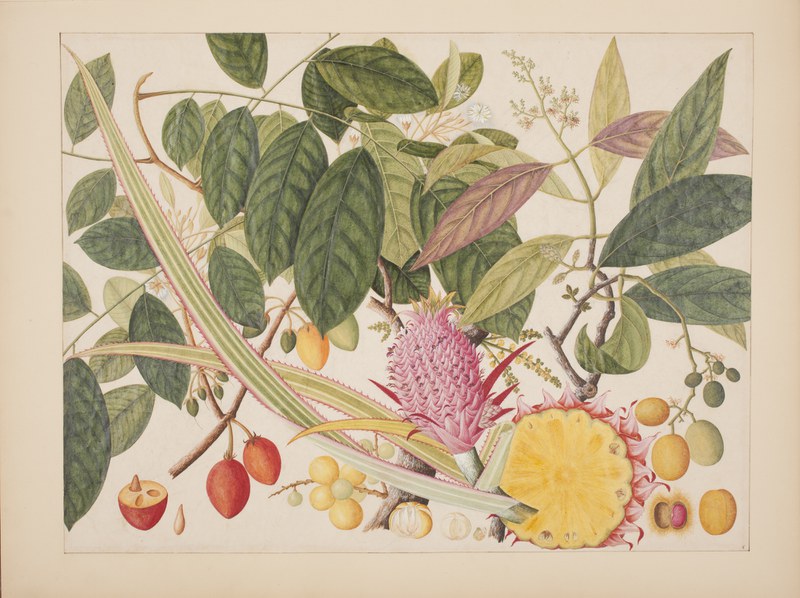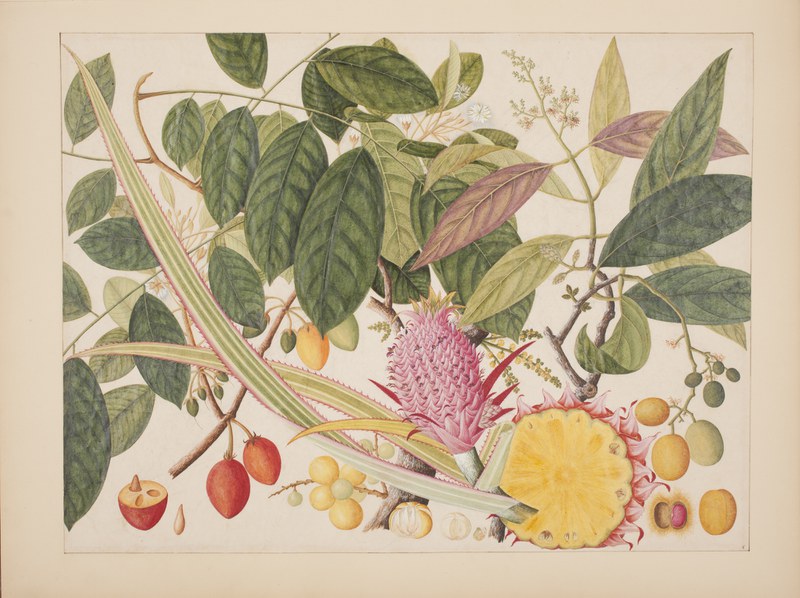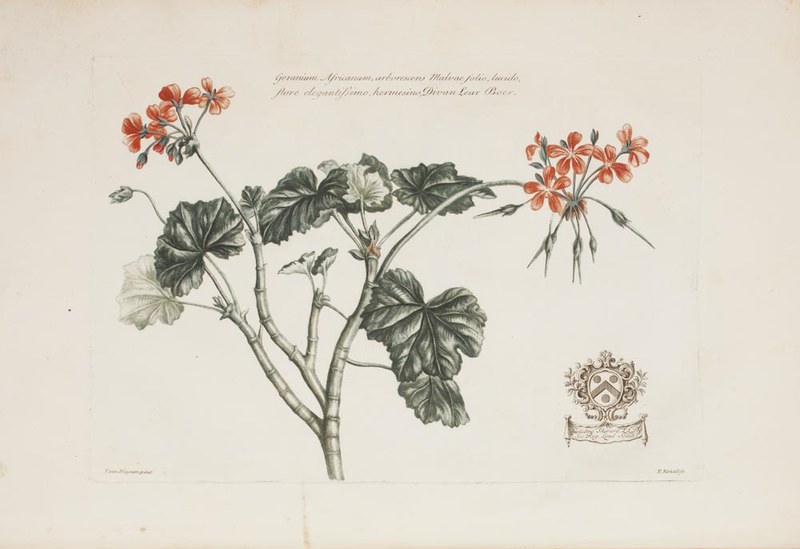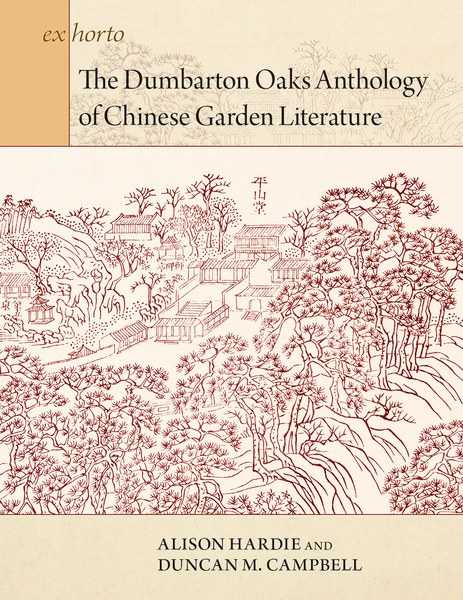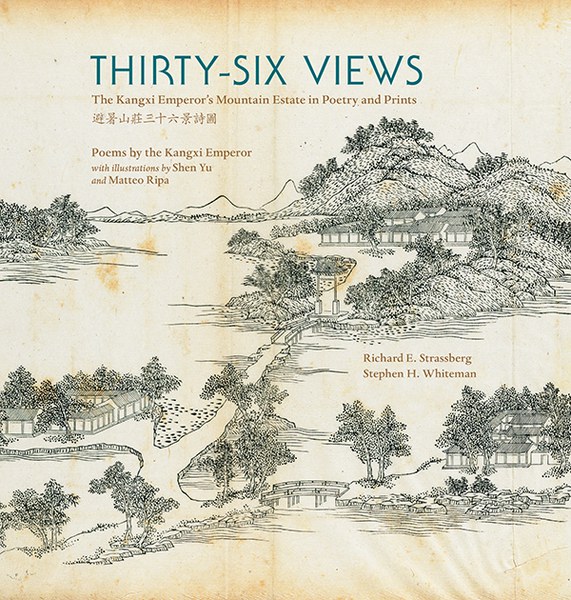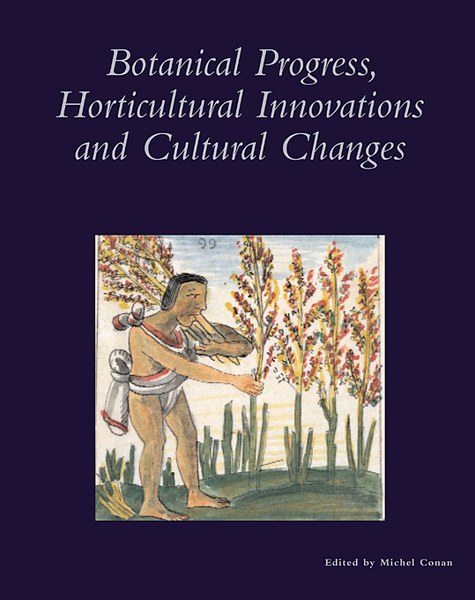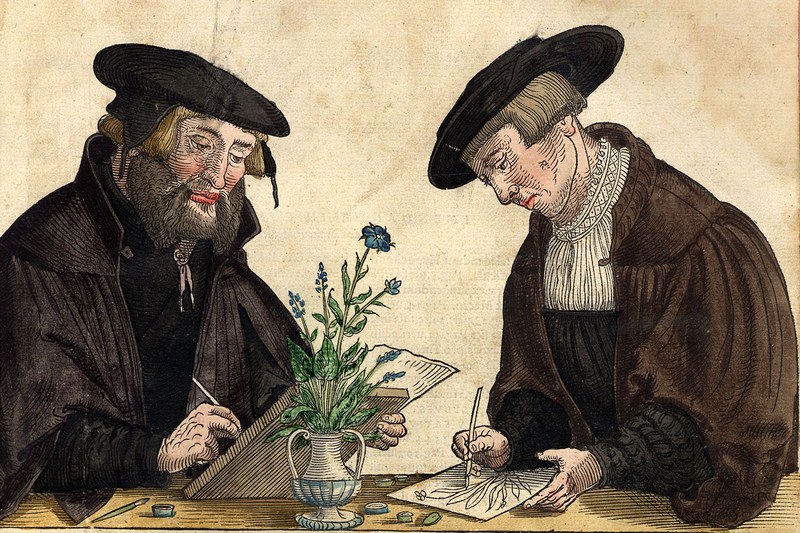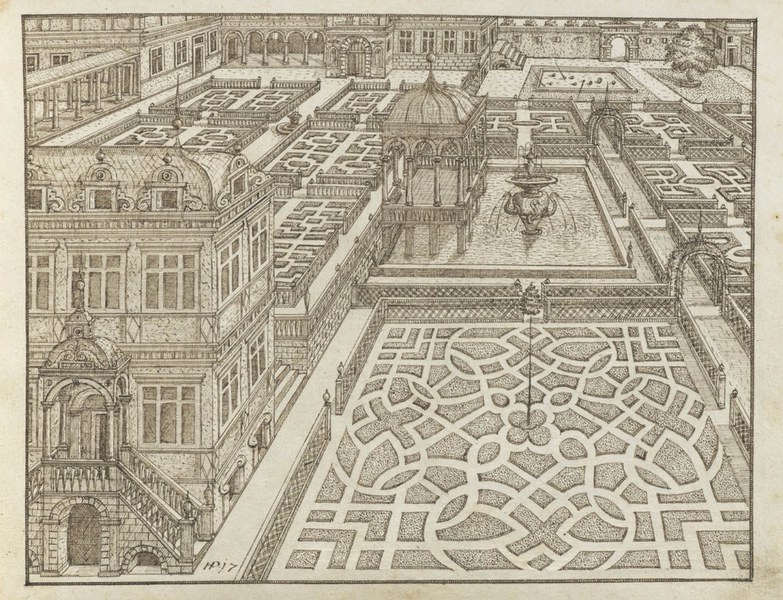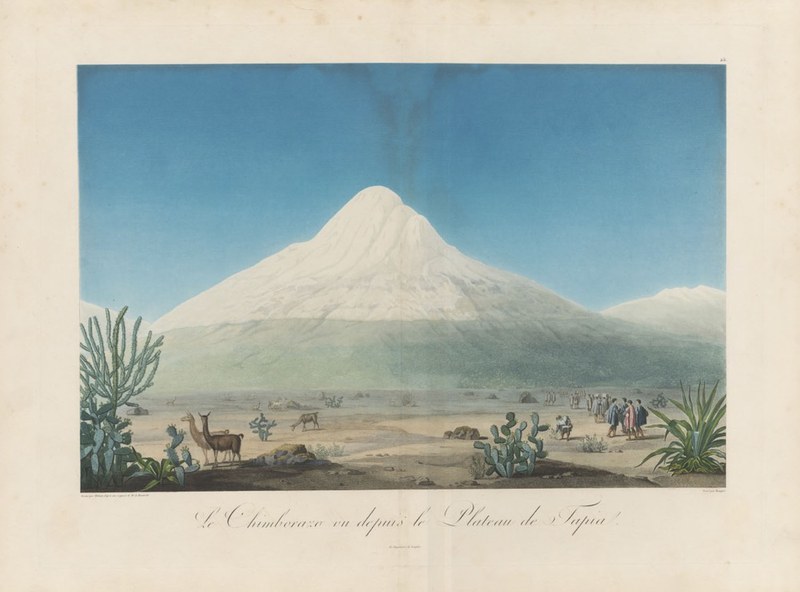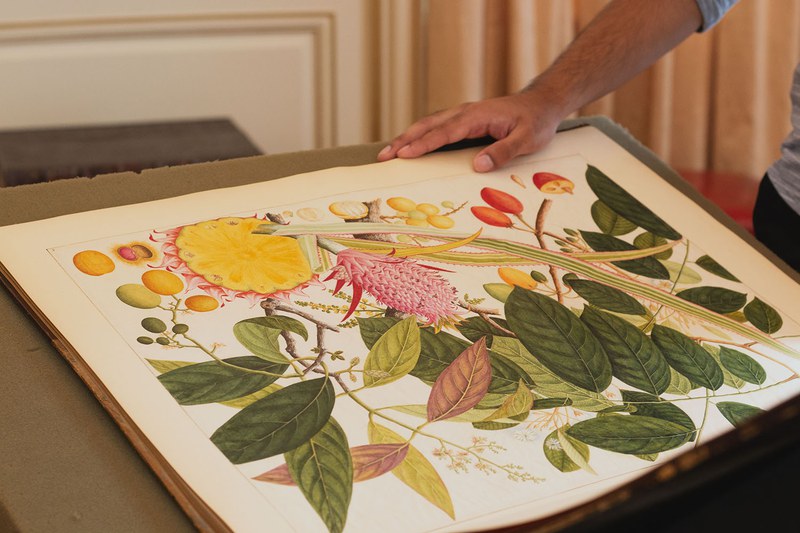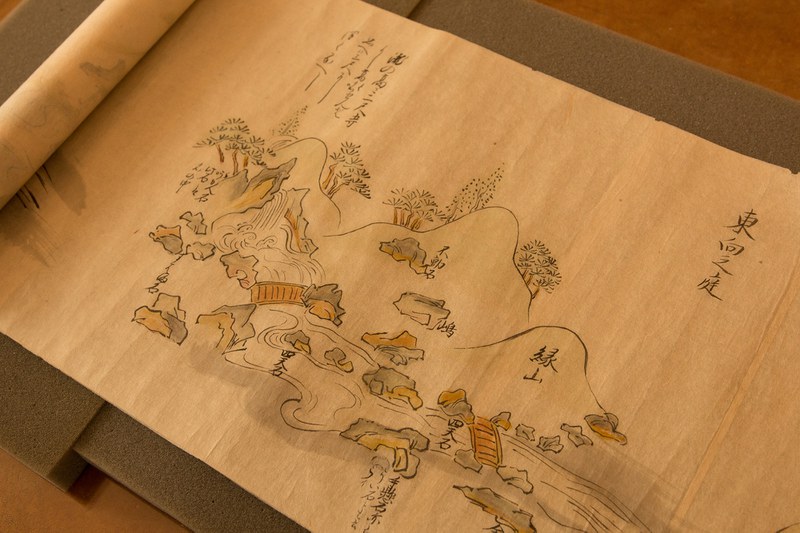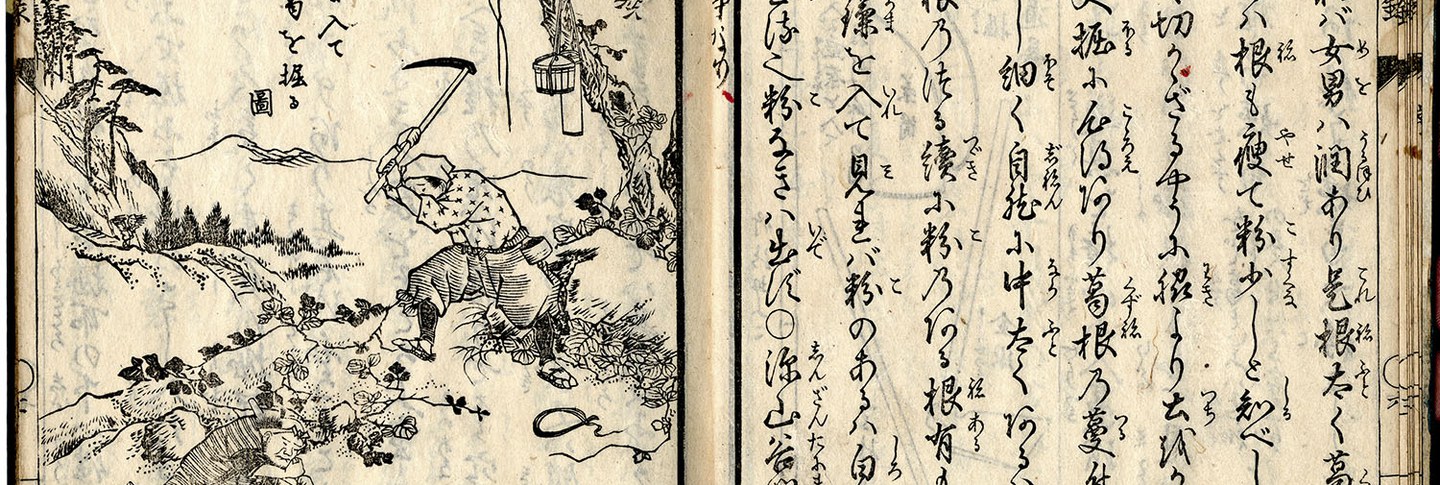
East Asian Holdings
Rare Books Online Exhibits Publications External Resources Related Content
East Asian holdings constitute a small yet growing and representative section within Dumbarton Oaks collection. The core of this selection is made by Japanese materials that include printed books and manuscript scrolls from the late Edo and Meiji periods, the earliest of which date to the eighteenth century. Illustrated design manuals, occasionally amended or abridged in the course of their transmission, occupy a prominent place among these items. These practical guides highlight traditional gardening methods and practices—for example, the principles of geomancy or bonsai techniques—as well as characteristic plant materials and distinctly Japanese garden forms, such as bonseki, rock gardens, and artificial hills. Watercolor sketchbooks and woodblock illustrations of plants and animals reflect broader aesthetic values and cultural attitudes, usually shared with China, including the heightened appreciation of flowering trees (emphasizing seasonal variations) and responses to nature through a fusion of painting and poetry.
Recent additions are nineteenth-century treatises on the harvesting and processing of kudzu and the cultivation of wax trees used in the production of lacquer, both by the agricultural reformer Nagatsune Ōkura; and works on materia medica, such as the study of the origin, properties, and uses of Korean ginseng and the role of Dutch merchants in its importation to Japan.
A particularly interesting group are products of East-West interaction, including views of the Kanxi Emperor’s summer estate north of Beijing, rendered by Matteo Ripa from the original woodblocks into engravings, and a set of botanical illustrations made by the Japanese artist Keiga Kawahara in collaboration with the physician Philipp Franz von Siebold at the Dutch Factory at Dejima. Typical of such cross-cultural contacts are also watercolor albums of Asian fruits and flowers, generally produced for a Western audience by Chinese artists based in Southeast Asia.
Searching for Materials in HOLLIS
In addition to select digitized titles, the Dumbarton Oaks Rare Book Collection holds numerous East Asian materials. To quickly locate items in HOLLIS, use the “Advanced Search” feature to specify material subject, language, date range, or other criteria. For East Asian materials, the quickest search strategy is to narrow by language, for example:
Digitized Rare Books
Online Exhibits
Explore highlights from the collection using the East Asian holdings, or view all online exhibits.
Publications
Discover featured titles related to East Asia below and search all titles from Dumbarton Oaks Publications.
External Resources
The Japanese Garden Dictionary: A Glossary for Japanese Gardens and Their History provides definitions and, in some cases, illustrations, of garden design terminology and links each entry in English to its corresponding term in Japanese.
The Japanese Historical Maps Collection contains 2,298 early maps of Japan, including 697 woodblock-print maps dating from the Tokugawa period (1600-1867). The collection was acquired by the University of California from the Mitsui family in 1949, and is housed on the Berkeley campus in the C.V. Starr East Asian Library. Part of the collection has been digitized through LUNA, and historical maps of Tokyo, Osaka, and Kyoto can be viewed as overlays in Google Maps and Google Earth.
The Pulverer Collection, which was acquired by the Freer Gallery of Art in 2007, is considered one of the greatest collections of Japanese illustrated books. The collection consists of over 900 illustrated book titles produced between the seventeenth and twentieth centuries, a period spanning the early Edo to Shōwa (1926–1989) periods. The Freer’s online catalog of the collection, The World of the Japanese Illustrated Book, is the initial phase of an ongoing project to make the entire collection available online. In addition to digitizing these volumes, the site includes short scholarly commentaries to contextualize individual items and additional peer-reviewed essays written by scholars in the fields of Japanese art, history, and book production and publication.
In 1869, the Emperor of China presented 933 volumes to the United States; these volumes became the basis for the collection of the Asian Division at the Library of Congress, which have grown to represent one of the most comprehensive collections of Asian language materials in the world. Housed in the John Adams Building, the collections of the Division include most subject fields, covering an area ranging from the South Asian subcontinent and Southeast Asia to China, Japan, and Korea. The Library of Congress has made many of the rare materials in the Division available online, compiling online collections such as the Ainu and Ezochi Rare Collection and the Chinese Rare Book Digital Collection.
In addition to Chinese, Japanese, Korean, and Western language materials, the Harvard–Yenching Library at Harvard University houses collections in Vietnamese, Tibetan, Manchu, and Mongolian, representing the most comprehensive East Asian collection of any American university. The library’s website provides short descriptions for each of their collections, with links to in-depth research guides and digitized rare books. See, for example, the pages for the Chinese Collection, Japanese Collection, and Korean Collection; the links are located at the bottom of the page under “Accessing These Materials.”
Harvard Library has also produced a thorough subject guide for the study of East Asian Art. The guide includes links to relevant electronic journals and databases, as well as to digitized Chinese & Japanese scroll paintings and photographic collections, particularly early photography of Japan, housed in the Fine Arts Library Special Collections and digitized materials from other institutions.
The Council on East Asian Libraries maintains a list of East Asian Libraries in North America, many of which have made portions of their collections available online.
Related Collection Strengths
Learn more about other collection strengths that may contain materials of interest to this research topic, or view all collection strengths.
Related Content
Discover related news, resources, and opportunities at Dumbarton Oaks.
The Mystery of the Pink Pineapple
![[Views of Jehol, the Seat of the Summer Palace of the Emperors of China]](https://www.doaks.org/resources/rare-books/views-of-jehol-the-seat-of-the-summer-palace-of-the-emperors-of-china/006476110_1/@@images/9b997acb-ff3f-424d-9880-e7bbf0d53169.jpeg)
